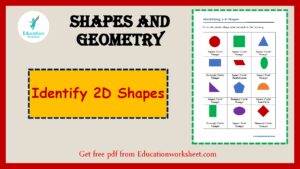Shapes and objects identification
Shapes and objects identification
Identifying shapes and objects is an essential skill that is often introduced in early childhood education. Here’s a step-by-step guide on how to teach and practice shapes and objects identification:
-
Start with the Basics:
- Begin with the most common and simple shapes, such as circles, squares, triangles, and rectangles. These shapes are usually the first ones children learn to identify.
- Use Visual Aids: Visual aids like flashcards, posters, or books featuring different shapes can be highly effective. These materials provide clear illustrations of each shape and help learners associate shapes with real-world objects.
- Hands-On Activities: Engage in hands-on activities to reinforce learning. Activities might include:
- Shape Sorting: Provide a collection of objects or picture cards with different shapes and have the child sort them into groups by shape.
- Drawing and Tracing: Encourage children to draw or trace shapes using pencils, crayons, or even their fingers in sand or on a touchscreen device.
- Craft Projects: Create art projects that involve cutting out and gluing different shapes to form pictures or patterns.
- Real-World Exploration: Take children on a “shape hunt” in their environment. Encourage them to identify shapes in everyday objects, such as finding circles in a clock or rectangles in a book.
- Shape Games and Puzzles: Play games and puzzles that involve shapes. Examples include jigsaw puzzles with shape pieces and shape-matching games.
- Interactive Apps and Online Resources: Many educational apps and websites offer interactive games and quizzes to help children practice identifying shapes and objects. These can be useful for reinforcement.

Shapes and objects identification -
Vocabulary Building:
- Teach the names of shapes and objects. For example, explain that a round shape is called a “circle,” and a shape with four equal sides is a “square.” This helps children develop their language skills as they learn to describe objects more accurately.
- Repetition and Practice: Like any skill, shape and object identification require repetition and practice. Review previously learned shapes regularly and introduce new ones gradually.
- Encourage Questions: Encourage children to ask questions about shapes and objects they encounter. Answer their questions and provide additional information to expand their understanding.
- Make it Fun: Learning should be enjoyable. Incorporate games, songs, and stories related to shapes and objects to keep children engaged and motivated.
- Assessment and Recognition: Assess a child’s progress by asking them to identify shapes in different contexts. Praise their efforts and celebrate their successes to boost their confidence.
- Gradual Complexity: As children become proficient in identifying basic shapes, gradually introduce more complex shapes like ovals, hexagons, and 3D shapes (e.g., cubes and cylinders).
Remember that every child learns at their own pace, so be patient and provide plenty of opportunities for hands-on exploration and learning. By using a combination of visual aids, activities, and real-world experiences, you can help children become skilled at identifying shapes and objects.
-
Learn Basic Shapes:
- Start by learning the names and characteristics of common 2D shapes, such as circles, squares, triangles, rectangles, and pentagons. Understand their defining features, like the number of sides and angles they have.
- Study 3D Shapes:
- Expand your knowledge to include 3D shapes, like cubes, spheres, cones, cylinders, and pyramids. Understand their properties, such as the number of faces, edges, and vertices.
- Use Educational Resources:
- Utilize educational materials like books, worksheets, and online resources that provide visual examples and descriptions of different shapes and objects.
- Observe Your Surroundings:
- Practice identifying shapes and objects in your everyday environment. Look around your home, school, or outdoors, and try to spot various shapes in objects like furniture, buildings, and nature.
- Play Shape Games:
- Engage in interactive games and activities that involve shapes. Puzzles, tangrams, and shape sorting games can be fun and effective ways to reinforce your knowledge.

